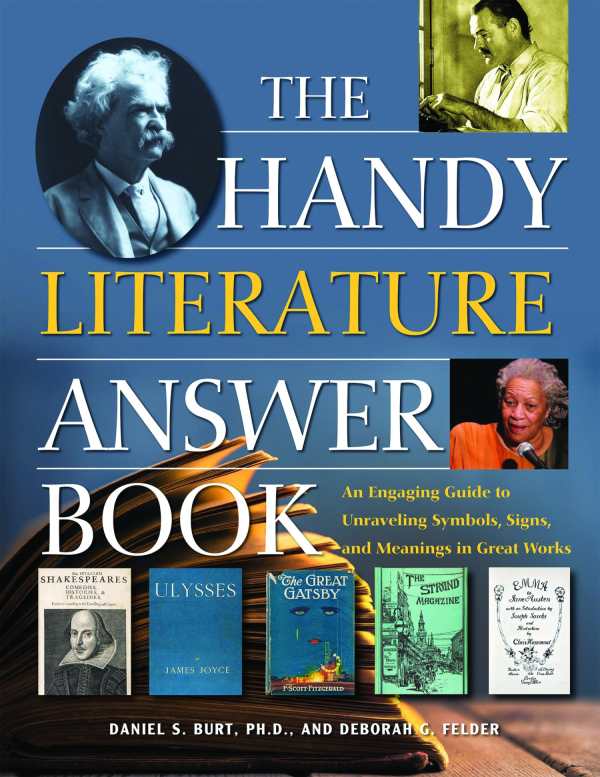The Handy Literature Answer Book
An Engaging Guide to Unraveling Symbols, Signs, and Meanings in Great Works
Am I missing something? Who among us hasn’t whispered those words while piecing together disparate plotlines in a novel, or drew blanks at the use of symbolism and allusion practiced by certain intellectual writers—subtle references to Lucretius, Montaigne’s thoughts on idleness, Jane Austen’s powder room routines, or some other tidbit from literature’s deep well? But good writers employ these tactics because they make the reading experience far richer—for those who can follow along.
The Handy Literature Answer Book: An Engaging Guide to Unraveling Symbols, Signs, and Meanings in Great Works just made that job much easier. Daniel S. Burt and Deborah G. Felder investigate hundreds of important works to showcase the expert use of literary devices by authors throughout history. Equally important, they provide guidance for getting the most out of short stories, poems, memoirs, literary nonfiction, as well as the novel. In a nine-page spread on James Joyce, the authors detail “Joyce’s contributions to the modern short story,” and explain “how the stories in Dubliners operate,” and these are just two examples of extensive Joyce-related fodder that the authors explore. In terms of entertainment, The Handy Literature Answer Guide is an exceptional project to leap about in—from Samuel Beckett to Toni Morrison, Elizabethan drama to why speed reading isn’t recommended, and so much more.
Reviewed by
Matt Sutherland
Disclosure: This article is not an endorsement, but a review. The publisher of this book provided free copies of the book to have their book reviewed by a professional reviewer. No fee was paid by the publisher for this review. Foreword Reviews only recommends books that we love. Foreword Magazine, Inc. is disclosing this in accordance with the Federal Trade Commission’s 16 CFR, Part 255.

